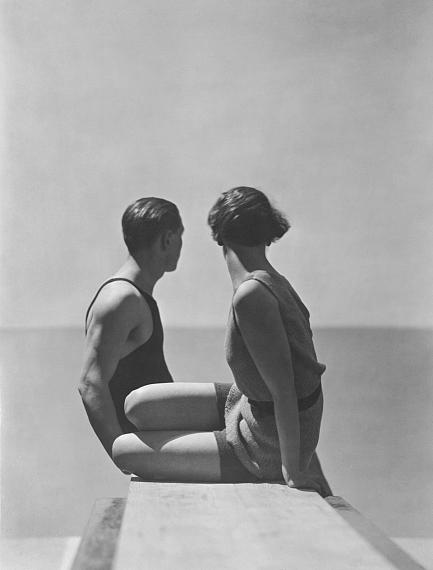
© George Hoyningen-Huene Estate Archives
George Hoyningen-Huene »
A Timeless Allure: The Photographic Art of George Hoyningen-Huene
Zeitlose Eleganz: Die Fotokunst von George Hoyningen-Huene
Exhibition: 28 Aug – 4 Sep 2021
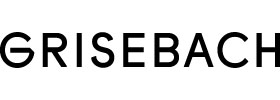
Grisebach
Fasanenstr. 25
10719 Berlin
+49 (0)30-8859150
auktionen@grisebach.com
www.grisebach.com/
Tue-Fri 10-18, Sat 11-16
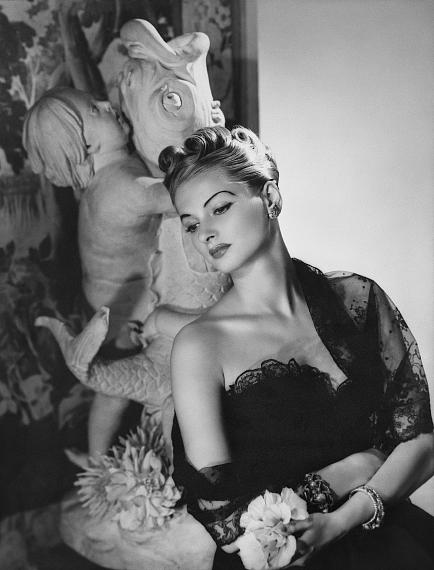
© George Hoyningen-Huene Estate Archives
"A Timeless Allure: The Photographic Art of George Hoyningen-Huene"
Exhibition: 28 August – 4 September 2021
Grisebach is delighted to host a special exhibition about the work of George Hoyningen-Huene (1900–1968) as part of BERLIN PHOTO WEEK.
Hoyningen-Huene, often known simply as Huene, epitomised the connections between art, fashion and cinema. He worked primarily in Paris, New York and Hollywood and first gained international fame in the fields of sophisticated fashion and portrait photography. His carefully-lit studio compositions infused with elements of modernism, neoclassicism and surrealism made Huene one of the leading photographers at Vogue and Vanity Fair magazines from 1926 to 1935, and later at the rival magazine Harper’s Bazaar, and he became a principal chronicler within the intertwined worlds of art, fashion, design, film and high society. Revered by his contemporaries, he also inspired subsequent generations of photographers and filmmakers around the world. In the words of Richard Avedon, Huene was "a genius, the master of us all".
This exhibition is a collaboration among the George Hoyningen-Huene Estate Archives, Benjamin Jäger, art director of BERLIN PHOTO WEEK, and Grisebach. Approximately 50 photographs from Huene’s extraordinary career will be displayed at Grisebach. The show will explore not only his elegant couture fashion shoots, but also his glamorous portraits of the stars of stage and screen, and travel photographs from his journeys through Europe and Africa. Rarely seen prints from the Archives will be displayed alongside exquisite large-scale platinum palladium prints. Several of the photographs are being publicly exhibited for the first time.
The opening section of the exhibition explores Huene’s contribution to fashion magazines, where he worked with the top models of the time such as Lisa Fonssagrives and Toto Koopman. Two of his favourites were the German model Agneta Fischer and the American Lee Miller, both of whom later became photographers themselves. He brought grace and naturalness to his photoshoots of exclusive couture creations by designers such as Balenciaga, Chanel, Lanvin, Schiaparelli and Vionnet, and he became a specialist in chic studies of beachwear.
The second section showcases Huene’s portraiture. The film industry had fascinated Huene since his youth. Dozens of actors and performers sat for him and he approached each sitting anew, striving to record the unique characteristics of Hollywood idols including Gary Cooper, Marlene Dietrich and Anna May Wong in the 1930s, Rita Hayworth and Katharine Hepburn in the 1940s, Greta Garbo in the 1950s, and Ava Gardner in the 1960s.
When Huene became restless in the confines of the studio, he embarked on a series of ambitious travels with his camera, resulting in five books: African Mirage, the Record of a Journey (1938, including his insightful diary text); Hellas (1943); Egypt (1943); Mexican Heritage (1946); and Baalbek/Palmyra (1946). The third section of the exhibition features Huene’s stunning landscape images and candid portraits of the people he encountered across the globe.
The final part of the exhibition comprises platinum palladium prints, which are prized for their permanence and rich tonal spectrum. In the 1960s, Irving Penn started experimenting with platinum palladium and others followed, including fellow photographer Horst P. Horst. In 1968 Huene had bequeathed his archive to Horst, and in the 1980s Horst began to make platinum palladium prints from Huene’s negatives for museums and collectors to purchase. These prints have a lush, matt surface and their tones range from velvety blacks to a myriad of greys and delicate whites. The exhibition features 15 of the prints made under Horst’s instruction, including iconic images such as Divers (1930). In 2020, the Estate Archives launched a new limited-edition series of platinum palladium prints, and several of these spectacular large prints will be exhibited for the first time in Germany.
During his lifetime, Huene was included in ground-breaking German exhibitions such as Film und Foto der 20er Jahre (1929) and Photokina (1963). More recently, his pictures have featured in major exhibitions on the history of fashion photography, but he has never been the subject of a solo exhibition in Germany. His work can be found in many world-class collections, including the Getty Museum, Los Angeles; MoMA, New York; the Pompidou Centre, Paris; V&A, London; and F.C. Gundlach Collection, Hamburg.
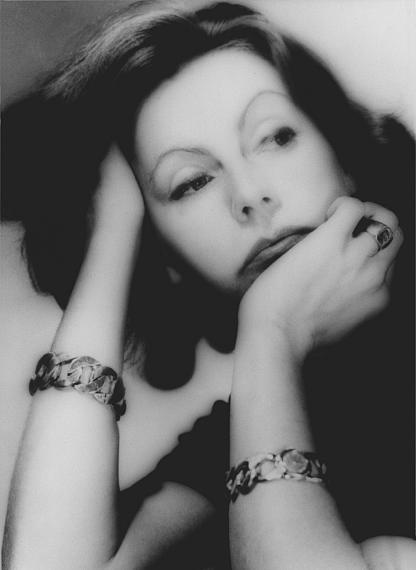
© George Hoyningen-Huene Estate Archives
"Zeitlose Eleganz: Die Fotokunst von George Hoyningen-Huene"
Ausstellung: 28. August bis zum 4. September 2021
Grisebach freut sich, anlässlich der BERLIN PHOTO WEEK eine Sonderausstellung über das Werk von George Hoyningen-Huene (1900-1968) zu zeigen.
Wie kein anderer verstand es Hoyningen-Huene, meistens lediglich als Huene bekannt, Kunst, Mode und Kino miteinander zu verbinden. Er arbeitete vor allem in Paris, New York und Hollywood und erlangte zunächst internationalen Ruhm für seine sehr anspruchsvolle Mode- und Porträtfotografie. Seine sorgfältig ausgeleuchteten Studiokompositionen mit Elementen der Moderne, des Neoklassizismus und des Surrealismus machten Huene von 1926 bis 1935 zu einem der führenden Fotografen der Zeitschriften Vogue und Vanity Fair, später auch von Harper’s Bazaar und einem der wichtigsten Chronisten innerhalb der miteinander verflochtenen Welten von Kunst, Mode, Design, Film und High Society. Von seinen Zeitgenossen verehrt, inspirierte er auch nachfolgende Generationen von Fotografen und Filmemachern in aller Welt. Richard Avedon bezeichnete Huene als "ein Genie, der Meister von uns allen".
Die Ausstellung ist eine Zusammenarbeit zwischen dem George Hoyningen-Huene Estate Archives, Benjamin Jäger, dem Art Director der BERLIN PHOTO WEEK und Grisebach. Rund 50 Fotografien aus Huenes außergewöhnlicher Karriere werden bei Grisebach gezeigt. Ausgestellt werden nicht nur seine eleganten Couture-Mode-Shootings, sondern auch seine glamourösen Porträts von Bühnen- und Leinwandstars sowie Fotografien seiner zahlreichen Reisen durch Europa und Afrika. Seltene Abzüge aus dem Archiv werden neben außergewöhnlichen großformatigen Platin-Palladium-Abzügen gezeigt. Einige der Fotografien werden zum ersten Mal öffentlich präsentiert.
In dem ersten Teil der Ausstellung wird Huenes Einfluss auf Modemagazine beleuchtet, für die er mit den Topmodels seiner Zeit, wie Lisa Fonssagrives und Toto Koopman arbeitete. Zwei seiner Lieblingsmodelle waren die deutsche Agneta Fischer und die Amerikanerin Lee Miller, die beide später selbst Fotografinnen wurden. Er brachte Anmut und Natürlichkeit in seine Fotoshootings der exklusiven Couture-Kreationen von Designern wie Balenciaga, Chanel, Lanvin, Schiaparelli und Vionnet, und er galt als Spezialist für elegante Inszenierung von Bademode.
Der zweite Teil der Ausstellung widmet sich der Portraitfotografie von Huene. Die Filmindustrie hatte Huene seit seiner Jugend fasziniert. Dutzende von Schauspielern und Künstlern wurden von ihm abgelichtet und er bereitete sich auf jedes Shooting aufs Neue vor, denn er strebte danach, die unterschiedlichen Charaktereigenschaften der jeweiligen Hollywood-Idole festzuhalten. So portraitierte er unter anderem Gary Cooper, Marlene Dietrich und Anna May Wong in den 1930er Jahren, Rita Hayworth und Katharine Hepburn in den 1940er Jahren, Greta Garbo in den 1950er Jahren und Ava Gardner in den 1960er Jahren.
Irgendwann wurde ihm sein Studio zu eng und getrieben von dieser Unruhe, begab er sich mit seiner Kamera auf eine Reihe von Reisen, aus denen fünf Bücher hervorgingen: African Mirage, the Record of a Journey (1938); Hellas (1943); Egypt (1943); Mexican Heritage (1946); und Baalbek/Palmyra (1946). Der dritte Teil der Ausstellung widmet sich Huenes atemberaubenden Landschaftsbildern und ungeschönten Porträts von Menschen, denen er überall auf der Welt begegnete.
Das letzte Kapitel der Ausstellung befaßt sich mit den beeindruckenden Platin-Palladium-Abzügen, die für ihre Langlebigkeit und ihr reiches Tonwertspektrum berühmt sind. In den 1960er Jahren begann Irving Penn mit dem Platin-Palladium-Verfahren zu experimentieren und andere folgten, darunter auch sein Fotografenkollege Horst P. Horst. 1968 hatte Huene sein Archiv Horst P. Horst vermacht, und in den 1980er Jahren begann Horst, von Huenes Negativen Platin-Palladium-Abzüge herzustellen, die von Museen und Sammlern erworben werden konnten. Diese außergewöhnlichen Abzüge haben eine satte, matte Oberfläche und ihre Tonwerte reichen von samtigen Schwarztönen bis hin zu einer Vielzahl von Grautönen und zarten Weißtönen.
Die Ausstellung beinhaltet 15 der unter Horsts Anleitung entstandenen Abzüge, darunter ikonische Bilder wie z.B. Divers (1930). Im Jahr 2020 hat der Estate eine neue Serie von Platin-Palladium-Abzügen in streng limitierter Auflage herausgebracht, von denen einige dieser spektakulären Abzüge erstmals in Deutschland zu sehen sein werden.
Zu seinen Lebzeiten war Huene in wegweisenden deutschen Ausstellungen wie Film und Foto der 20er Jahre (1929) und während der Photokina (1963) vertreten. In jüngerer Zeit waren seine Bilder zwar in Ausstellungen zur Geschichte der Modefotografie zu sehen, eine Einzelausstellung zu seinem Werk gab es jedoch in Deutschland noch nie. Seine Arbeiten befinden sich in vielen hochkarätigen Sammlungen, darunter dem Getty Museum, Museum of Modern Art, Centre Georges Pompidou, Victoria and Albert Museum oder der Sammlung F.C. Gundlach.
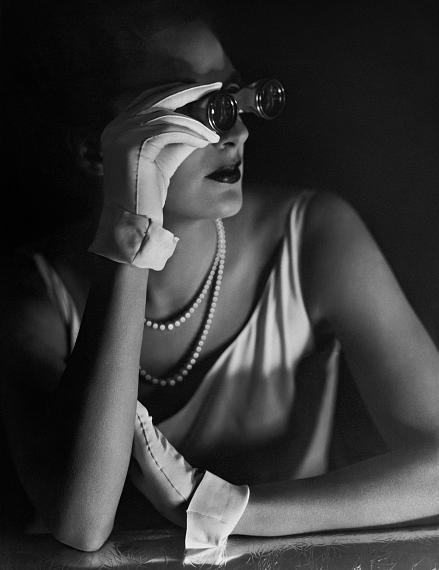
© George Hoyningen-Huene Estate Archives